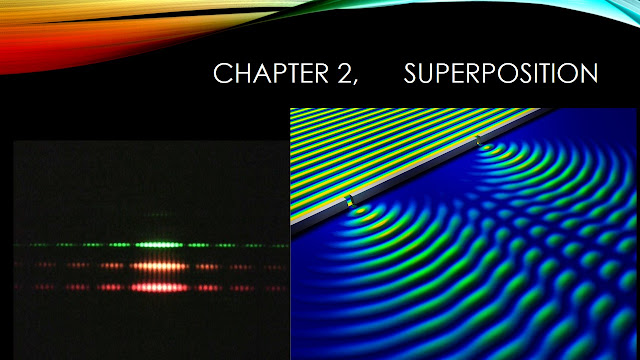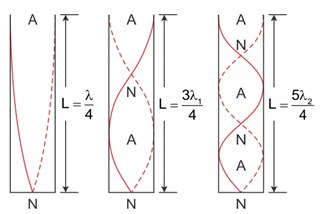http://www.bbc.co.uk/schools/gcsebitesize/science/add_ocr_pre_2011/wave_model/lightandsoundrev1.shtml
Standing waves
A standing wave pattern is a vibrational pattern created within a medium when the vibrational frequency of the source causes reflected waves from one end of the medium to interfere with incident waves from the source. This interference occurs in such a manner that specific points along the medium appear to be standing still. Because the observed wave pattern is characterized by points that appear to be standing still, the pattern is often called a standing wave pattern. Such patterns are only created within the medium at specific frequencies of vibration. These frequencies are known as harmonic frequencies, or merely harmonics.
A standing wave pattern is an interference phenomenon. It is formed as the result of the perfectly timed interference of two waves passing through the same medium. A standing wave pattern is not actually a wave; rather it is the pattern resulting from the presence of two waves (sometimes more) of the same frequency with different directions of travel within the same medium.
VIDEO RESONANT REQUENCIES ON A STRETCHED STRING
how standing waves are formed in closed pipes
http://www.bbc.co.uk/schools/gcsebitesize/science/ocr_gateway/home_energy/introduction_to_wavesrev6.shtml


INTERFERENCE Youngs Double slitExpt.
https://www.youtube.com/watch?v=Pk6s2OlKzKQ
Numerical problems
1.Red light of wave length 664nm is used in Young's experiment as shown in the below figure.The slits are separated by a distance 1.2 x 10 -4 and the screen is located at a distance 2.75m from the slits.
a.Find the distance(x) on the screen between the central bright fringe and the first order bright fringe.
b.if the red light is replaced by blue light of wave length 470 nm what will happen to the distance of the third bright fringe from the central fringe. Explain.







































No comments:
Post a Comment